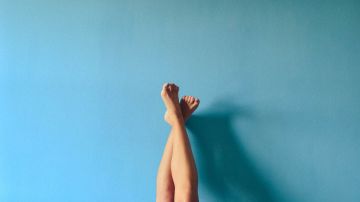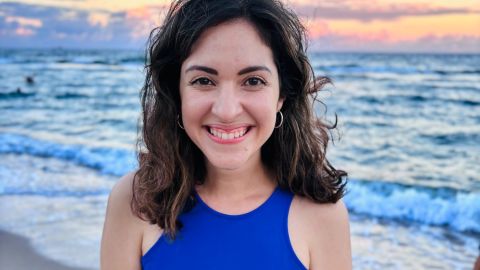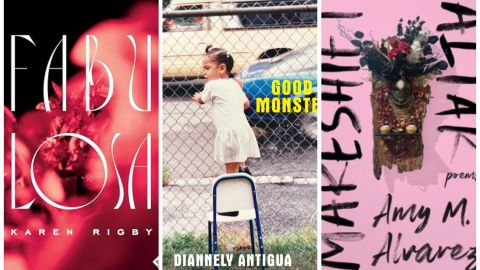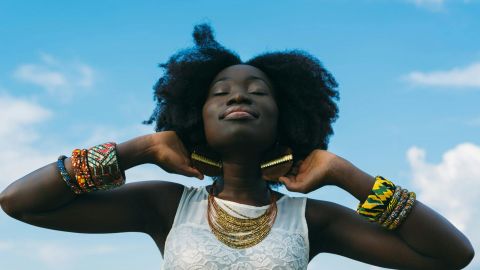7 Latinas Get Real About Body Image and Their Insecurities
https://www

Photo: @ciabattespugnose
https://www.instagram.com/p/BUC-4CDBRlX/
We might have come a long way when it comes to body positivity and self-love, but that doesn’t mean there aren’t a ton of women out feeling somewhat dissatisfied with their bodies. We might have had plus-size model Ashley Graham make history when she landed on the cover of Sports Illustrated’s swimsuit issue and tons of retail brands like Aerie and Swimsuits For All, swearing off Photoshop in their ads, but a Dove Global Beauty and Confidence Report last year found that women and young girl’s body confidence is still depressingly low. This has got to stop. But how do we encourage women to not allow society’s conflicting beauty standards to take a toll on their self-esteems? One way is to get real women to talk about them.
[brid autoplay=”true” video=”256114″ player=”8620″ title=”The struggle is real. Swimsuits. Love it or Leave it”]
We got seven Latinas to open up about their insecurities and how they learned to love and embrace their bodies – despite the beauty standards that are constantly thrown in their faces. Check them out and be inspired!wp_*posts
Giselle Castro

Photo: Instagram/@fit_and_nutricious
Age: 29
Nationality: Colombian and Peruvian
IG Handle:@fit_and_nutricious
Body type: “I would describe my body type as petite and athletic. I’m a short woman, but I’m pretty solid since I’ve put on lean muscle in the past few years due to weight training. My body can sometimes make it a struggle to find clothes that fit just right because of my height and build.”
On how she felt about her body growing up: “Growing up I definitely struggled with body image. I was somewhat overweight and during my adolescence dealt with hormonal and period issues due to my Polycystic Ovarian Syndrome (PCOS) diagnosis. The condition can make losing weight a struggle for many women and it was hard for me to go through this during those awkward teenage years. I would compare myself to other girls I went to school with who seemed to have the ideal body and were also popular. It didn’t help that sometimes female family members would make comments about how I’d look better skinnier. I didn’t have a lot of friends I confided in about my body image issues, so I ended up internalizing a lot of it. Shopping trips with my mom always ended in tears because I hated how everything I tried on looked on me.”
On Latin culture’s conflicting body image messages: “Growing up as a Latina was hard because I wasn’t curvy and I didn’t look remotely close to J.Lo or Jessica Alba. I didn’t fit that certain look that we are stereotyped for. I find that media still continues to push this idea that all Latinas are voluptuous and supposed to be sexy.”
On what helped her to love and accept her body. “I’m proud of my body and having learned that it’s capable of being strong. I love that I can bang out pushups or pullups and defy the stereotype that women can’t do what men can physically do. I embrace [my body’s] strength and it’s abilities as opposed to wondering if I’m thin enough. Sure, I still have my days where I find myself nitpicking about a flaw, but I’ve learned not to dwell on it.”
wp_*posts
Monique Frausto
Age: 40
Nationality: Mexican American
IG Handle: @moniquefrausto
Body type: “If I were to describe my own body type, I’d go with a crisp and yummy apple shape. I tend to carry my weight in my midsection and I don’t have much of a defined waist. My chest it also on the larger side, so that adds to my rounder figure.”
On how she felt about her body growing up: “Growing up, I didn’t notice my body until I was in high school. That’s when I started comparing myself to the older and more grown-up looking girls. I remember that I really hated my body. Especially, my belly. I felt like I was overweight, which I wasn’t according to my doctor. He told my mom I was the perfect weight for my height, but I still wasn’t happy with my body.”
On Latin culture’s conflicting body image messages: “As a young girl, I remember every garage I walked in was plastered with cerveza posters – all with curvy ladies in bikinis. Of course, it’s confusing, because I have those curves and that’s what I thought boys liked. It’s an ugly self-esteem crushing cycle.”
On what helped her to love and accept her body. “I can honestly say, I didn’t feel different about my body until I was in my 30s. My body had gone through so many changes at this point. It wasn’t until I started a blog about my own plus-size style that I noticed how much my attitude and confidence has changed. Being in a space with other women who were also confident and unapologetic about their bodies really helped. Today I am more grateful and appreciative of my body than I ever have been. I know this is who I am. This is the body I have right now and I am going to love it and be as kind to it as I can.”
wp_*posts
Stephanie Smith

Photo: Instagram/@stephybabe8723
Age: 29
Nationality: Puerto Rican
IG Handle: @stephybabe8723
Body type: “The best way to describe my body type would be top heavy, but athletic skinny, all top but very little bottom.
On how she felt about her body growing up: “For the longest time my body type was small framed with no curves in sight. I was constantly criticized for how small and boyish I looked and I hated it. After puberty took it’s toll on me. I realized that top heavy was the best I was going to get curves wise and it was really disappointing because I have always thought the most beautiful women had curves for days.”
On Latin culture’s conflicting body image messages: “Latin culture loves for women to have lots curves and to be skinny at the same time. While I had the skinny part down, I felt like I failed in the curves department. I was constantly told I needed to eat more and that I was starving myself and that’s why I was so skinny.”
On what helped her to love and accept her body. “As much as I would love to say that I completely love my body and how it looks today, that would be a lie. Two kids later, there are still things I would love to improve, but just don’t let them get in the way of how I feel about myself. My body may not be perfect but it’s mine. In this day and age, with all the horrible things people say to others specifically on social media, I think body acceptance is more important than ever. People love to attack other people based off their appearance and I know firsthand that when you love yourself and your body – no one on this planet can tear you down.”
wp_*posts
Maria G. Valdez

Photo: Instagram/@mariagvh
Age: 27
Nationality: Dominican
IG Handle: @mariagvh
Body type: “My body type is curvy, but curvy isn’t bad. People have a misconception that when a woman refers to herself as “curvy,” she’s saying she’s overweight and not necessarily the healthiest. That’s not true. Jennifer Lopez is curvy, Sofia Vergara is curvy. I am curvy.”
On how she felt about her body growing up: “Growing up I didn’t necessarily like my body. I developed at 11 years old, and I was never the skinny type but I wasn’t overweight either. I’m 5’8 and my bones are big, and at that point I was already a size eight. I went from wearing the largest size of kid’s clothes to having to shop in the women’s department in the blink of any eye. That was a bit of an issue because how do you find women’s clothes that are appropriate for an 11-year-old without making her look older? Thankfully my mom was very supportive with all the changes I was going through. I remember seeing all my friends being very skinny, no boobs, no period – no nothing. And I felt like an outsider.”
On what helped her to love and accept her body. “It was a process that took many years. Although, I was never necessarily “fat” growing up, I did start gaining weight in high school and that’s when my weight started fluctuating to the point where I would try different diets and they would work for a bit and then I would just quit because they weren’t necessarily a long-term change. Then in college I went on a downward spiral and ballooned up to over 200 pounds in my freshman year. Once I saw pictures of myself I knew I had to do something so I found a nutritionist and I also got into pilates because I realized that dieting was just not going to cut it. However, my food choices went back to being terrible and I ended up weighing 230 pounds and was not healthy at all. I was able to find a great trainer at the gym and a wellness center in Harlem that retaught me how to think about food. This time it finally clicked, and now I’m learning to balance the foods that I eat, the exercise that I perform and when and how to indulge. I thought I loved my body as I was letting myself go, but I never thought I could be where I am today, 60 pounds lighter, stronger than ever, loving my body even more.”
wp_*posts
Dinorah Pena

Photo: Instagram/@dinorah_pena
Age: 28
Nationality: Dominican American
IG Handle: @dinorah_pena
Body type: “Curvy with a hint of athletic. I work out and have built muscle, but those have been built around the curves.”
On how she felt about her body growing up: ‘For the most part, I always felt good about my body. Your environment plays a major role in how you feel. Although it was all about the Hollywood skinny girls growing up, curves and thickness wasn’t a trend, it was who we were and who some of our families and friends were too.”
On what inspired her to love her body even more: “My love for my body took a whole new level when I started working out. I wasn’t an athletic kid growing up; it wasn’t until I was about 23 that I discovered the gym. When I saw what my body was capable of doing, how it could transform, and how what I put it through physically positively impacted what I put it through mentally and emotionally, my body became my sanctuary. Body acceptance is important because if we don’t learn to love and embrace the uniqueness we all have, we’re always chasing to be someone we weren’t born to be.”
wp_*posts
Jaquí Rodriguez

Photo: Instagram/@loveyourcurvas
Age: 35
Nationality: Dominican
IG Handle: @loveyourcurvas
Body type: “I would consider myself to be thick/curvy.”
On how she felt about her body growing up: “I didn’t have a great relationship with my body. I was always la gordita growing up. I think I spent my entire life wanting to be thin. Once I reached age 14-15, I started exercising. I took up weight training instead of dance like the other girls for gym.”
On Latin culture’s conflicting body image messages: “I was always called gordita, which was true but I think labeling us inadvertently creates self-conscious feelings that are internalized and to some extent the idea of not being enough as we are. This is also true for thinner women. I think Latin culture is continuously seeking some kind of “perfection.” Now when someone says ‘Eres gorda,’ I respond with a smile and say ‘sí, la vida es buena.’”
On her road to loving her body: “About a year after my bodybuilding competition, I gained about 60 pounds due to Hashimotos, a type of hypothyroid that creates a slow metabolism. At the time, I was so ashamed of how I looked especially after being at my fittest ever just a year prior. I was in the fitting room and dress after dress, I was tearing myself apart. I realized there was a monster in that room with me – it was all in my head. I came out the dressing room in tears. I began to be more aware of how I was speaking to myself and so my journey to love my curvas began. No matter what our health goal is, hating our bodies is not going to get us anywhere. Think about the low vibrations that creates. To me, body acceptance is about true self-acceptance, which creates so much inner peace and happiness. It shifts the way we react in relationship to the word and every person around us.”
wp_*posts
Denise Penagos

Photo: Instagram/@chica8201
Age: 31
Nationality: Colombian
IG Handle: @chica8201
Body type: “I’m fairly petite, but my legs aren’t stick skinny. I have a smaller chest and I have a butt. I’m just 5’3 and depending on the week, month, year, I’d fit into a typical sample size.”
On how she felt about her body growing up: “I don’t think I really thought much about my body growing up. It wasn’t really until college that I thought about exercising to look a certain way. But I did always assume the “right” body type was a thin, not-too-curvy body. I grew up in a mainly white neighborhood, where I was one of the only Latinas, so my perspective was definitely influenced [by that] and continues to be today at times.”
On Latin culture’s conflicting body image messages: “For years I have struggled with finding the right diet, the right exercise regimen, and the right lifestyle that works for me. Coming from a Latin background, there are certain foods and ways of eating that have influenced me for years and it’s tough to change that. If I didn’t finish my plate growing up, my abuelita or mom would get upset, take it offensively and it would turn into a larger conversation. When I mentioned dieting in college, it was always an issue. My family would always tell me to avoid being too skinny. That it’s good to have some meat on my bones. Any time I did lose weight and felt great, I would hear about it negatively from my family. But any time I would put on a few pounds, my family would encourage me cutting out rice and bread.”
On how she feels about her body today: “For the first time ever, I truly feel comfortable in my own skin … on most days. I feel strong, I know what works for my body and for the most part I choose to take care of it. I think it’s important to know though that body acceptance is an ever-changing thing. We have good days and bad days, and that’s okay. We only have one body so we better love it and accept it.”
[tps_footer][article_ad][/tps_footer]

















